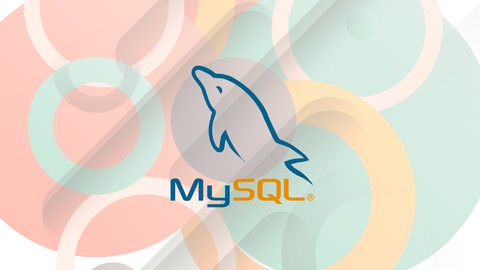
A beginner's guide to MySQL
A beginner's guide to MySQL, available at Free, has an average rating of 3.95, with 11 lectures, based on 227 reviews, and has 7136 subscribers.
You will learn about MySQL Basics MySQL Database CRUD Operations MySQL Advance Query Features Like GroupBy etc. MySQL Optimization This course is ideal for individuals who are Aspiring Database Developers or Aspiring Web Developers or Web Developers or Database Developers It is particularly useful for Aspiring Database Developers or Aspiring Web Developers or Web Developers or Database Developers.
Enroll now: A beginner's guide to MySQL
Summary
Title: A beginner's guide to MySQL
Price: Free
Average Rating: 3.95
Number of Lectures: 11
Number of Published Lectures: 11
Number of Curriculum Items: 11
Number of Published Curriculum Objects: 11
Original Price: Free
Quality Status: approved
Status: Live
What You Will Learn
- MySQL Basics
- MySQL Database CRUD Operations
- MySQL Advance Query Features Like GroupBy etc.
- MySQL Optimization
Who Should Attend
- Aspiring Database Developers
- Aspiring Web Developers
- Web Developers
- Database Developers
Target Audiences
- Aspiring Database Developers
- Aspiring Web Developers
- Web Developers
- Database Developers
MySQL is written in C and C++. Its SQL parser is written in yacc, but it uses a home-brewed lexical analyzer.
MySQL works on many system platforms, including AIX, BSDi, FreeBSD, HP-UX, ArcaOS, eComStation, IBM i, IRIX, Linux, macOS, Microsoft Windows, NetBSD, Novell NetWare, OpenBSD, OpenSolaris, OS/2 Warp, QNX, Oracle Solaris, Symbian, SunOS, SCO OpenServer, SCO UnixWare, Sanos and Tru64. A port of MySQL to OpenVMS also exists.
The MySQL server software itself and the client libraries use dual-licensing distribution. They are offered under GPL version 2, or a proprietary license.
MySQL is an open-source relational database management system (RDBMS). Its name is a combination of “My”, the name of co-founder Michael Widenius’s daughter, and “SQL”, the abbreviation for Structured Query Language. A relational database organizes data into one or more data tables in which data types may be related to each other; these relations help structure the data. SQL is a language programmers use to create, modify and extract data from the relational database, as well as control user access to the database. In addition to relational databases and SQL, an RDBMS like MySQL works with an operating system to implement a relational database in a computer’s storage system, manages users, allows for network access and facilitates testing database integrity and creation of backups.
MySQL is free and open-source software under the terms of the GNU General Public License, and is also available under a variety of proprietary licenses. MySQL was owned and sponsored by the Swedish company MySQL AB, which was bought by Sun Microsystems (now Oracle Corporation). In 2010, when Oracle acquired Sun.
MySQL has stand-alone clients that allow users to interact directly with a MySQL database using SQL, but more often, MySQL is used with other programs to implement applications that need relational database capability. MySQL is a component of the LAMP web application software stack (and others), which is an acronym for Linux, Apache, MySQL, Perl/PHP/Python. MySQL is used by many database-driven web applications, including Drupal, Joomla, phpBB, and WordPress. MySQL is also used by many popular websites, including Facebook, Twitter, and YouTube.
Course Curriculum
Chapter 1: Introduction
Lecture 1: Introduction
Lecture 2: Downloading and Installation
Lecture 3: MySQL
Lecture 4: Insert
Lecture 5: MySQL
Lecture 6: MySQL Join
Lecture 7: MySQL Aggregate
Lecture 8: MySQL Views
Lecture 9: MySQL GroupBy and SubQuery
Lecture 10: MySQL Delete
Lecture 11: MySQL Conclusion
Instructors
-
SkillBakery Studio
Start Learning Today…
Rating Distribution
- 1 stars: 11 votes
- 2 stars: 19 votes
- 3 stars: 55 votes
- 4 stars: 67 votes
- 5 stars: 75 votes
Frequently Asked Questions
How long do I have access to the course materials?
You can view and review the lecture materials indefinitely, like an on-demand channel.
Can I take my courses with me wherever I go?
Definitely! If you have an internet connection, courses on Udemy are available on any device at any time. If you don’t have an internet connection, some instructors also let their students download course lectures. That’s up to the instructor though, so make sure you get on their good side!
You may also like
- Top 10 Video Editing Courses to Learn in November 2024
- Top 10 Music Production Courses to Learn in November 2024
- Top 10 Animation Courses to Learn in November 2024
- Top 10 Digital Illustration Courses to Learn in November 2024
- Top 10 Renewable Energy Courses to Learn in November 2024
- Top 10 Sustainable Living Courses to Learn in November 2024
- Top 10 Ethical AI Courses to Learn in November 2024
- Top 10 Cybersecurity Fundamentals Courses to Learn in November 2024
- Top 10 Smart Home Technology Courses to Learn in November 2024
- Top 10 Holistic Health Courses to Learn in November 2024
- Top 10 Nutrition And Diet Planning Courses to Learn in November 2024
- Top 10 Yoga Instruction Courses to Learn in November 2024
- Top 10 Stress Management Courses to Learn in November 2024
- Top 10 Mindfulness Meditation Courses to Learn in November 2024
- Top 10 Life Coaching Courses to Learn in November 2024
- Top 10 Career Development Courses to Learn in November 2024
- Top 10 Relationship Building Courses to Learn in November 2024
- Top 10 Parenting Skills Courses to Learn in November 2024
- Top 10 Home Improvement Courses to Learn in November 2024
- Top 10 Gardening Courses to Learn in November 2024






















